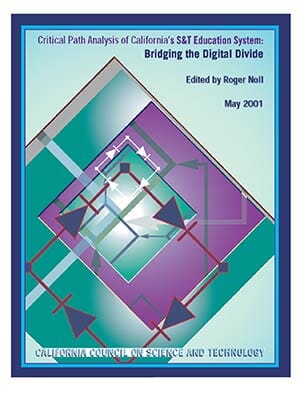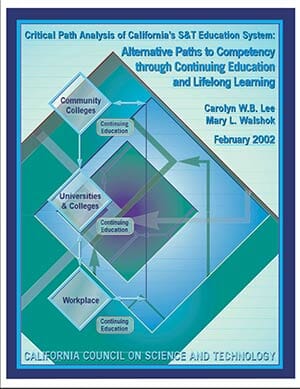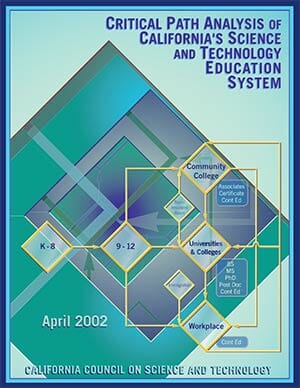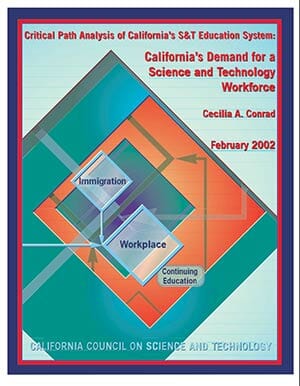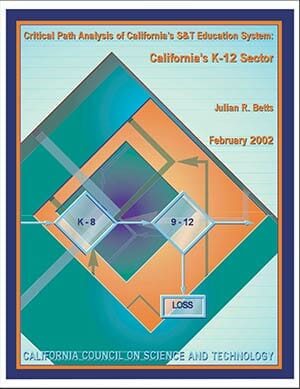Bridging the Digital Divide
Author(s): Noll, Roger G.; Older-Aguilar, Dina; Crandall, Robert W.; Pea, Roy D.; Ross, Richard R.; Rosston, Gregory L.
Release Date: May 7, 2001 | Last Updated Date: May 7, 2001
Abstract
This report, the sixth in a series of six prepared as part of the Critical Path Analysis project, includes a series of papers presented at a December 2000 forum on the Digital Divide at Stanford University. These papers include policy recommendations that discuss how to close the gap between those who have access to computers and the Internet and those who do not.
These policy recommendations were incorporated into CCST’s 2002 Critical Path Analysis study, and were also submitted to Gov. Gray Davis and the Senate Office of Research.
Papers from the forum proceedings include:
- The Digital Divide: Diagnosis and Policy Options by CCST Fellow Roger G. Noll, professor of public policy at Stanford, and Dina Older-Aguilar, doctoral candidate at Stanford. In this paper, the researchers describe four policy areas that emerged from the forum: universal service, equal access, content diversity, and educational uses of information. They suggest ways to ensure that as many people as possible have access to the Internet and that the content is broad enough to have relevance for different social groups. Some of their recommendations:
- Programs to promote universal access, particularly to low-income households, could be funded through a broad-based tax;
- e-government initiatives–such as agency web sites that allow citizens to access information online–could be expanded. Government policies could assuage fears about privacy invasion through protective regulation;
- Resources need to be devoted to software and teacher training as well as hardware and Internet access. More attention could be paid to experimenting with the use of information technology in education, and carefully monitoring the results.
- The Digital Divide, Measurement, and Policy Issues by Roger G. Noll, Dina Older-Aguilar, Richard R. Ross, graduate student in economics at Stanford, and Gregory L. Rosston, deputy director of the Stanford Institute for Economic Policy Research. This paper reviews research findings and discusses the magnitude of the information technology gap, how different population groups use information technology, and the use of IT in secondary education. The authors also present data on measuring the success of computer and Internet use in education.
- Universal Service, Equal Access, and the Digital Divide by Robert W. Crandall, senior economist at the Brookings Institution. The author describes recent federal telecommunication reforms on universal service and equal access, discusses the impact of past decisions, and makes projections for the future. Crandall concludes that rate distortions and subsidies are biasing the industry, and that needy households are not targeted for help. Crandall suggests that allowing market forces rather than federal intervention to drive the telecom industry will result in a more balanced approach.
- Technology, Equity, and K-12 Learning by Roy Pea, co-director of the Center for Technology and Learning, SRI International, and education professor at Stanford. In this paper, Pea describes and discusses recent data on how equitable access to information technology and the Internet can impact K-12 learning. He also presents data on computer use and teacher preparedness. Pea says that being connected to the Internet is no longer the point, but that access to the right type of information presented in a useful way is far more important.

